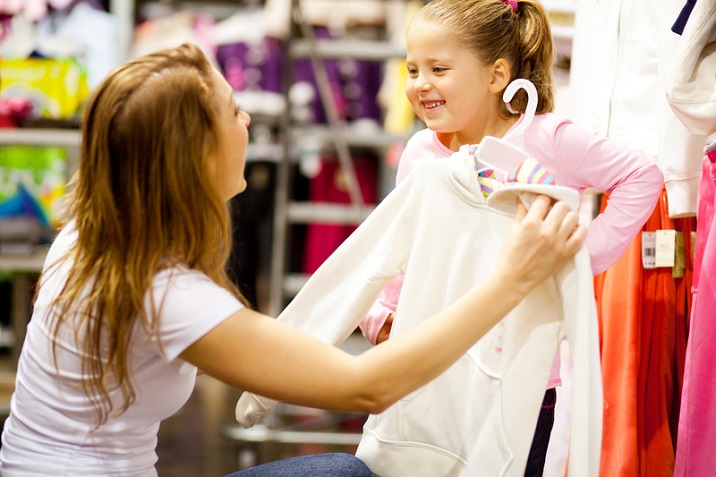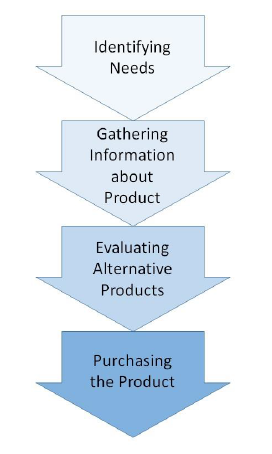
- Retailing - Overview
- Retail Management - Sectors
- Retail Challenges & Theories
- Understanding Retail Consumer
- Inside Retail Management
- Market Segmentation & Strategies
- Retail - Business Location
- Merchandise Management
- Retail - Business Operations
- Retail Management - Space
- Retail Management Resources
- Retail Management - Quick Guide
- Retail Management - Resources
- Retail Management - Discussion
Understanding Retail Consumer
Whether it is stocks or socks, I like buying quality merchandise when it is marked down.
− Warren Buffet (American business magnate)
Understanding retail consumer deals with understanding their buying behavior in retail stores. Understanding the consumer is important to know who buys what, when, and how. It is also important to know how to evaluate consumers response to sales promotion. It is very vital to understand the consumer in the retail sector for the survival and prosperity of the business.
Consumer versus Customer
A consumer is a user of a product or a service whereas a customer is a buyer of the product or service. The customer decides what to buy and executes the deal of purchasing by paying and availing the product or service. The consumer uses the product or service for oneself.
For example, the customer of a pet food is not the consumer of the same. Also, if a mother in a supermarket is buying Nestl Milo for her toddler son then she is a customer and her son is a consumer.

Identifying a Customer
It is sometimes difficult to understand who is actually a decision maker while purchasing when a customer enters the shop accompanying someone else. Thus everyone who enters the shop is considered as a customer. Still, it is necessary to identify composition and origin of the customers.
Composition of Customers − It includes customers of various gender, age, economic and educational status, religion, nationality, and occupation.
Origin of Customer − From where the customer comes to shop, how much the customer travels to reach the shop, and which type of area the customer lives in.
Objective of Customer − Shopping or Buying? Shopping is visiting the shops with the intention of looking for new products and may or may not necessarily include buying. Buying means actually purchasing a product. What does the customers body language depict?
Customers Buying Behavior Patterns
The needs, tastes, and preferences of the consumer for whom the products are purchased drives the buying behavior of the customer. The pattern of customers buying behavior can be categorized as −
Place of Purchase
Customers divide their place of purchase. Even if all the products they want are available at a shop, they prefer to visit various shops and compare them in terms of prices. When the customers have a choice of which shop to buy from, their loyalty does not remain permanent to a single shop.
Study of customers place of purchase is important for selection of location, keeping appropriate merchandise, and selecting a distributor in close proximity.
Product Purchased
It pertains to what items and how many units of items the customer purchases. The customer purchases a product depending upon the following −
- Availability/Shortage of product
- Requirement/Choice of product
- Perishability of product
- Storage requirements
- Purchasing power of oneself
This category is important for producers, distributors, and retailers. Say, soaps, toothbrushes, potatoes, and apples are purchased by a large group of customers irrespective of their demographics but live lobsters, French grapes, avocadoes, baked beans, or beef are purchased by only a small number of customers with strong regional demarcation.
Similarly, the customers rarely purchase a single potato or a banana, like more than two watermelons at a time.
Time and Frequency of Purchase
Retailers need to keep their working time tuned with customers availability. The time of purchase is influenced by −
- Weather
- Season
- Location of customer
The frequency of purchase mainly depends on the following factors −
- Type of commodity
- Degree of necessity involved
- Lifestyle of customers
- Festivals and customs
- Influence of the person accompanying the customer.
For example, Indian family man from intermediate income group would purchase a car not more than two times in his lifetime whereas a same-class customer from US may buy it more frequently. A tennis player would buy required stuff more frequently than a student learning tennis at a school.
Method of Purchase
It is the way a customer purchases. It involves factors such as −
- Is the customer purchasing alone or is accompanied by someone?
- How does the customer pay: by cash or by credit?
- What is the mode of travel for the customer?
Response to Sales Promotion Methods
The more the customer visits a retail shop, the more (s)he is exposed to the sales promotion methods. The use of sales promotional devices increases the number of shop visitors-turned-impulsive buyers.
The promotional methods include −
Displays − Consumer products are packaged and displayed with aesthetics while on display. Shape, size, color, and decoration create appeal.
Demonstrations − Consumers are influenced by giving away sample product or by showing how to use the product and its benefits.
Special pricing − Units special price under some scheme or during festive season, coupons, contests, prizes, etc.
Sales talks − It is verbal or printed advertisement conducted by the salesperson in the shop.
An urban customer, due to fast paced life would select easy-to-cook or ready-to-eat food over raw food material as compared to rural counterpart who comes from laid-back lifestyle and self-sufficiency in food items grown on farm.
It is found that the couples buy more items in a single transaction than a man or a woman shopping alone. Customers devote time for analyzing alternative products or services. Customers purchase required and perishable products quickly but when it comes to investing in consumer durables, (s)he tries to gather more information about the product.
Factors Influencing Retail Consumer
Understanding consumer behavior is critical for a retail business in order to create and develop effective marketing strategies and employ four Ps of marketing mix (Product, Price, Place, and Promotion) to generate high revenue in the long run.
Here are some factors which directly influence consumer buying behavior −
Market Conditions/Recession
In a well-performing market, customers dont mind spending on comfort and luxuries. In contrast, during an economic crisis they tend to prioritize their requirements from basic needs to luxuries, in that order and focus only on what is absolutely essential to survive.
Cultural Background
Every child (a would-be-customer) acquires a personality, thought process, and attitude while growing up by learning, observing, and forming opinions, likes, and dislikes from its surrounding. Buying behavior differs in people depending on the various cultures they are brought up in and different demographics they come from.

Social Status
Social status is nothing but a position of the customer in the society. Generally, people form groups while interacting with each other for the satisfaction of their social needs.
These groups have prominent effects on the buying behavior. When customers buy with family members or friends, the chances are more that their choice is altered or biased under peer pressure for the purpose of trying something new. Dominating people in the family can alter the choice or decision making of a submissive customer.
Income Levels
Consumers with high income has high self-respect and expects everything best when it comes to buying products or availing services. Consumers of this class dont generally think twice on cost if he is buying a good quality product.
On the other hand, low-income group consumers would prefer a low-cost substitute of the same product. For example, a professional earning handsome pay package would not hesitate to buy an iPhone6 but a taxi driver in India would buy a low-cost mobile.
Personal Elements
Here is how the personal elements change buying behavior −
Gender − Men and women differ in their perspective, objective, and habits while deciding what to buy and actually buying it. Researchers at Whartons Jay H. Baker Retail Initiative and the Verde Group, studied men and women on shopping and found that men buy, while women shop. Women have an emotional attachment to shopping and for men it is a mission. Hence, men shop fast and women stay in the shop for a longer time. Men make faster decisions, women prefer to look for better deals even if they have decided on buying a particular product.
Wise retail managers set their marketing policies such that the four Ps are appealing to both the genders.
Age − People belonging to different ages or stages of life cycles make different purchase decisions.
Occupation − The occupational status changes the requirement of the products or services. For example, a person working as a small-scale farmer may not require a high-priced electronic gadget but an IT professional would need it.
Lifestyle − Customers of different lifestyles choose different products within the same culture.
Nature − Customers with high personal awareness, confidence, adaptability, and dominance are too choosy and take time while selecting a product but are quick in making a buying decision.
Psychological Elements
Psychological factors are a major influence in customers buying behavior. Some of them are −
Motivation − Customers often make purchase decisions by particular motives such as natural force of hunger, thirst, need of safety, to name a few.
Perception − Customers form different perceptions about various products or services of the same category after using it. Hence perceptions of customer leads to biased buying decisions.
Learning − Customers learn about new products or services in the market from various resources such as peers, advertisements, and Internet. Hence, learning largely affects their buying decisions. For example, todays IT-age customer finds out the difference between two products specifications, costs, durability, expected life, looks, etc., and then decides which one to buy.
Beliefs and Attitudes − Beliefs and attitudes are important drivers of customers buying decision.
Consumers Decision Making Process
A customer goes through a number of stages as shown in the following figure before actually deciding to buy the product.
However, customers get to know about a product from each other. Smart retail managers therefore insist on recording customers feedback upon using the product. They can use this information while interacting with the manufacturer on how to upgrade the product.

Identifying ones need is the stimulating factor in buying decision. Here, the customer recognizes his need of buying a product. As far as satisfying a basic need such as hunger, thirst goes, the customer tends to decide quickly. But this step is important when the customer is buying consumer durables.
In the next step, the customer tries to find out as much information as he can about the product.
Further, the customer tries to seek the alternative products.
Then, the customer selects the best product available as per choice and budget, and decides to buy the same.